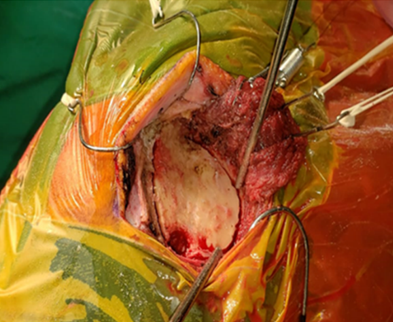Usted está aquí
Peruvian Journal of Neurosurgery
Minimally invasive surgery using Mini-pterional Interfascial Approach for the Clipping of a Ruptured Aneurysm of the right Carotid Bifurcation at the Dos de Mayo National Hospital, Lima-Peru
JOSÉ LUIS ACHA S, HÉCTOR YAYA-LOO, DAVID YABAR B, JULIO QUISPE-DEXTRE, DIANA HERRERA-ORELLANA, JESÚS PASACHE-JUAREZ
Abstract (Spanish) ||
Full Text ||
PDF (Spanish) ||
PDF (English)
ABSTRACT
|
Introduction: Carotid bifurcation aneurysms represent 2 to 9% of intracranial aneurysms1. They can be treated by endovascular or microsurgical techniques3, the latter being the most complex1-4 and used with low frequency in this type of aneurysm7.
Clinical case: A 57-year-old woman with a ruptured aneurysm of the right carotid bifurcation, incidentally, another small unruptured aneurysm of the left posterior communicating was found. She underwent a mini-pterional interfascial approach and aneurysm clipping with satisfactory results and a favorable evolution.
Conclusion: Aneurysms of the carotid bifurcation are not frequent; this is a non-common case due to the age of 57 years. The technique performed allowed the identification of the aneurysm, as in the classical pterional approach, but trying to minimize morbidity. The patient did not present post-surgical complications despite the risk factors presented, such as unbroken contralateral aneurysm, edema due to subarachnoid hemorrhage and arterial hypertension.
Keywords: Aneurysm, Ruptured, Subarachnoid Hemorrhage, Hypertension. (Source: MeSH NLM)
|



